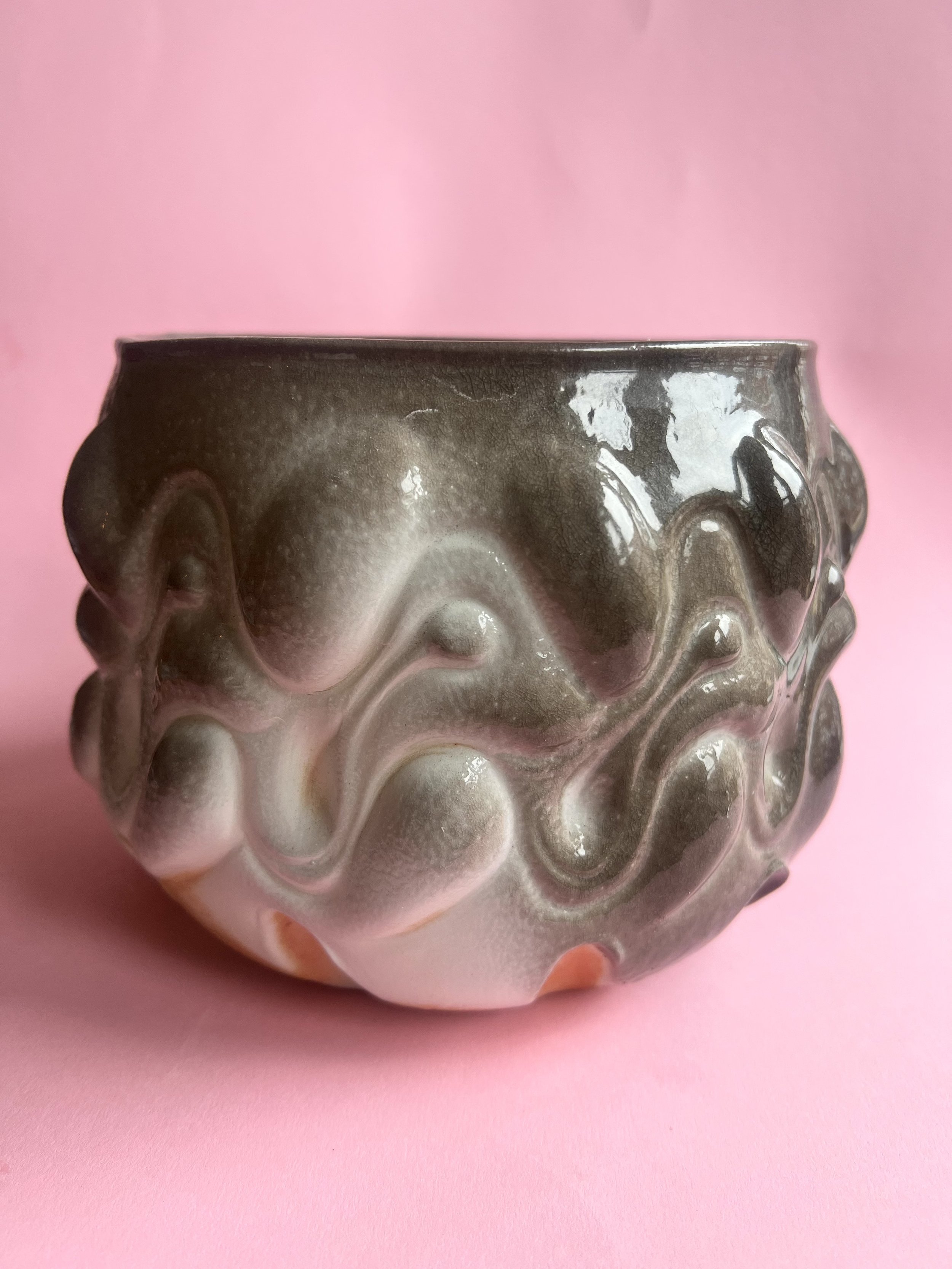 Image 1 of 9
Image 1 of 9

 Image 2 of 9
Image 2 of 9

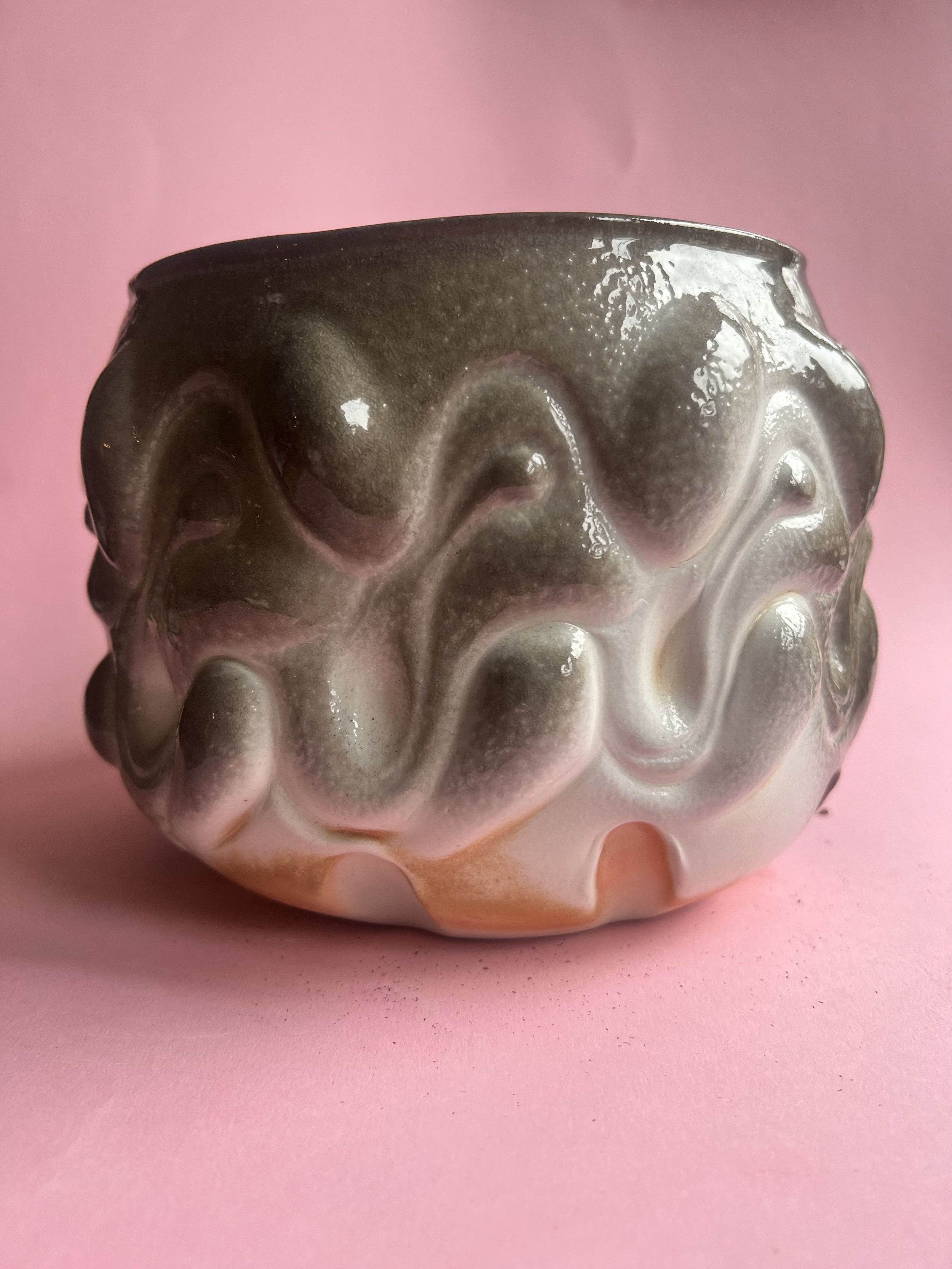 Image 3 of 9
Image 3 of 9

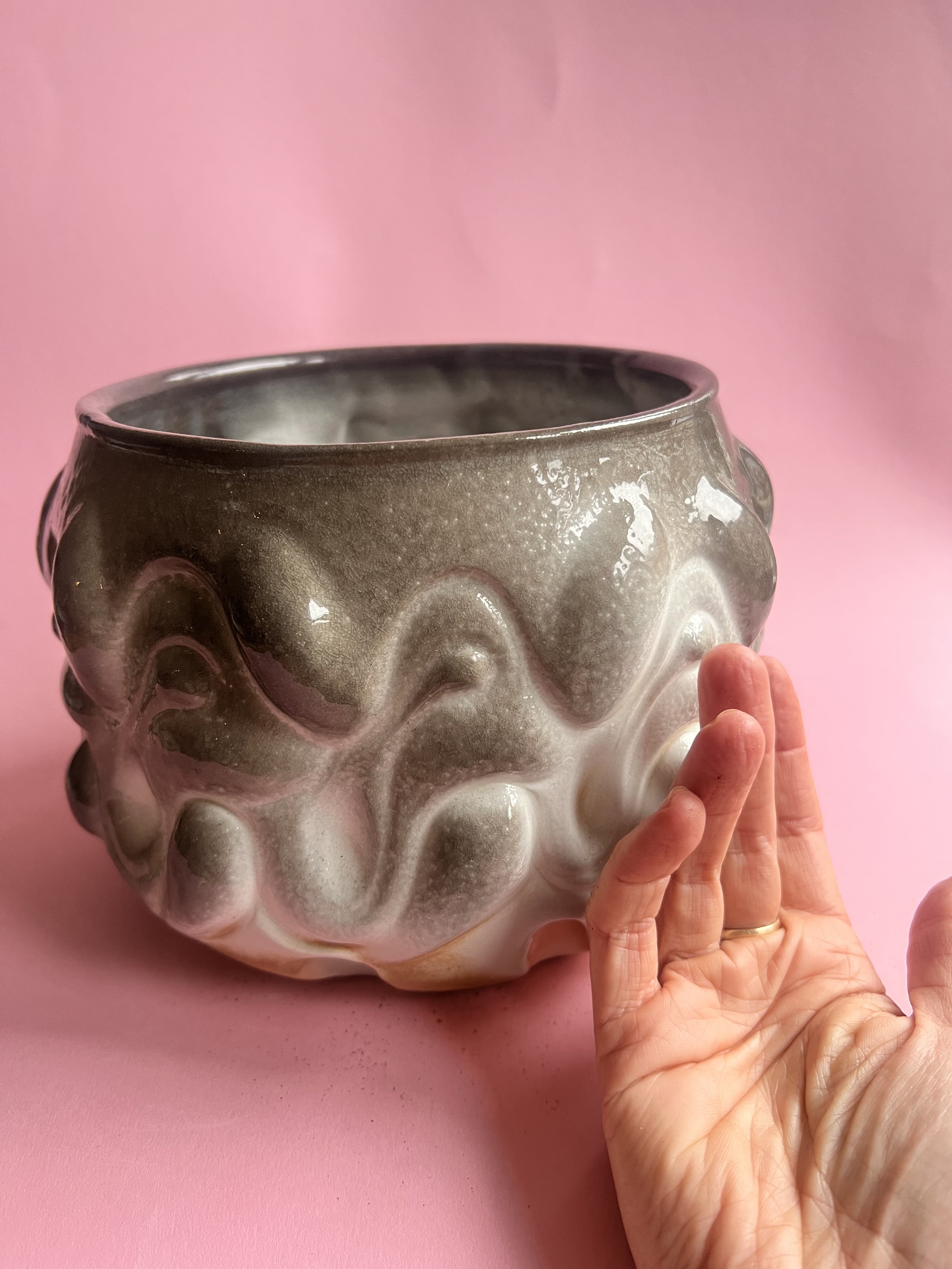 Image 4 of 9
Image 4 of 9

 Image 5 of 9
Image 5 of 9

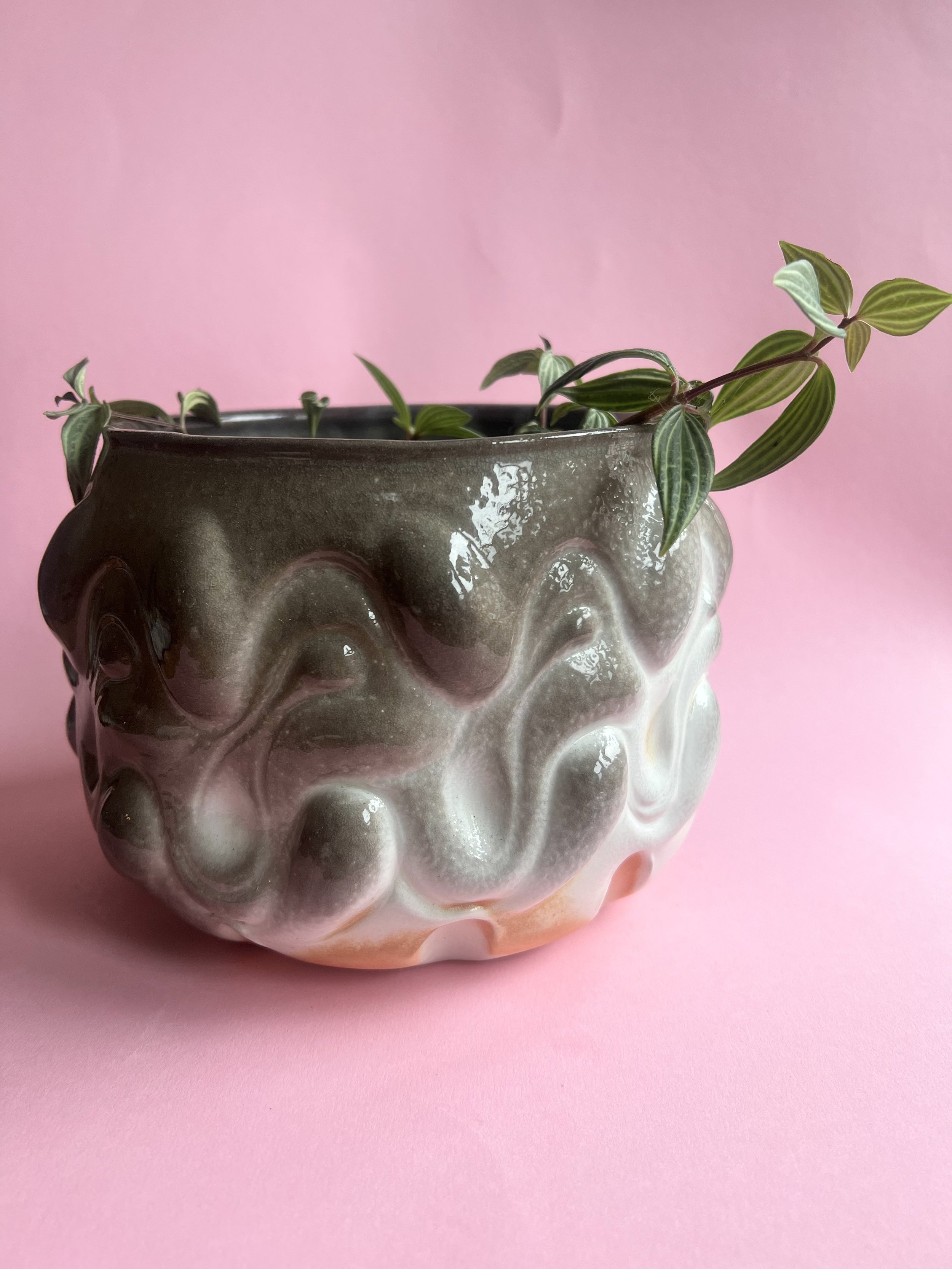 Image 6 of 9
Image 6 of 9

 Image 7 of 9
Image 7 of 9

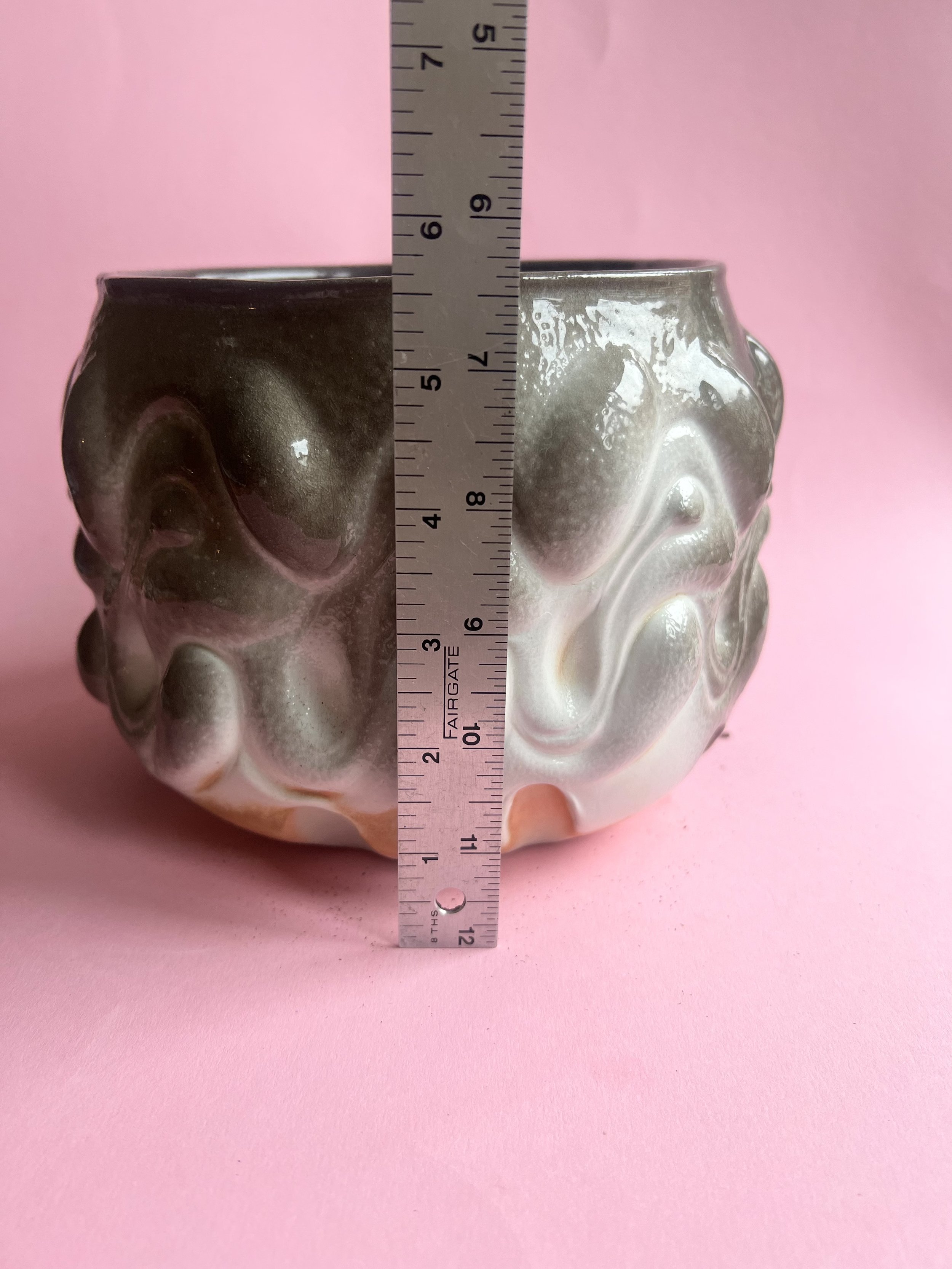 Image 8 of 9
Image 8 of 9

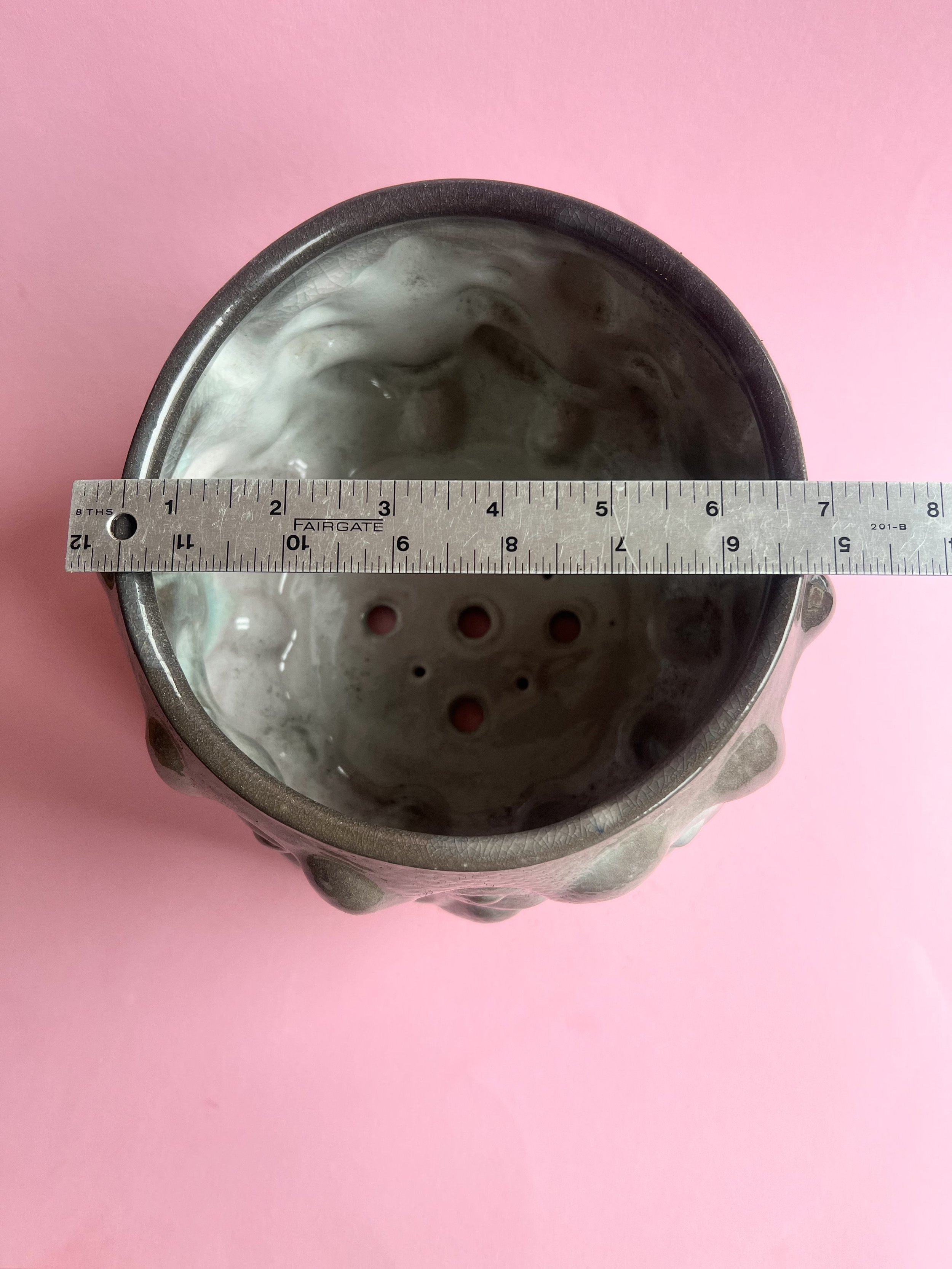 Image 9 of 9
Image 9 of 9










Planter: Soda Blast Pattern (Large)
Usually my altered pieces are a more organic design, this is one of the few where I created a pattern and continued it around the piece.
This planter got wonderfully blasted in the soda kiln. I love the rich depth of the surface.
Each soda fired piece is one-of-a-kind as atmospheric firings are unpredictable and can yield stunning results. Soda firing takes an enormous amount of time, energy, labor and resources and is usually a community effort. In the soda firing process, soda ash (sodium carbonate) is added to the kiln at cone 9 (2300°) and the sodium vapor combines with silica in clay to form sodium-silicate glaze. The soda also interacts with the slips and glazes to create swirling unpredictable colors that shift and change around the piece. The marks on the bottom are from the wadding used to hold the piece up off the kiln shelf so that glaze drips won’t fuse it to the shelf. They can leave lovely flame marks and are a telltale sign a piece is soda fired, though they don’t always happen, especially in low soda areas of the kiln.
Two of the wads on the bottom. had to be ground off and smoothed, which is typical for this level of soda. Your plants won’t mind.
Usually my altered pieces are a more organic design, this is one of the few where I created a pattern and continued it around the piece.
This planter got wonderfully blasted in the soda kiln. I love the rich depth of the surface.
Each soda fired piece is one-of-a-kind as atmospheric firings are unpredictable and can yield stunning results. Soda firing takes an enormous amount of time, energy, labor and resources and is usually a community effort. In the soda firing process, soda ash (sodium carbonate) is added to the kiln at cone 9 (2300°) and the sodium vapor combines with silica in clay to form sodium-silicate glaze. The soda also interacts with the slips and glazes to create swirling unpredictable colors that shift and change around the piece. The marks on the bottom are from the wadding used to hold the piece up off the kiln shelf so that glaze drips won’t fuse it to the shelf. They can leave lovely flame marks and are a telltale sign a piece is soda fired, though they don’t always happen, especially in low soda areas of the kiln.
Two of the wads on the bottom. had to be ground off and smoothed, which is typical for this level of soda. Your plants won’t mind.
